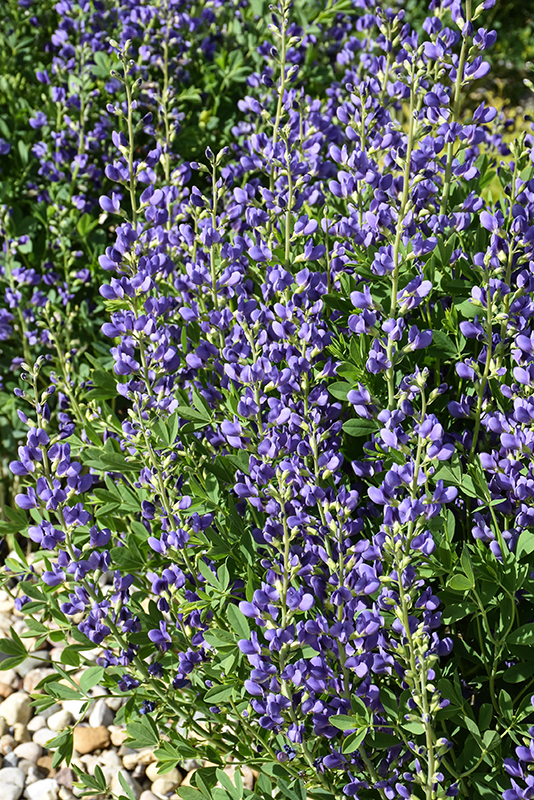Plant Height: 3 feet
Flower Height: 4 feet
Spread: 3 feet
Sunlight:
![]()
![]()
Hardiness Zone: 2
Other Names: False Indigo
Description:
Extraordinary indigo blue spikes of pea-flowers rise above medium green foliage from late spring to early summer; creates an outstanding display as an accent in garden beds or patio containers; drought tolerant once established
Ornamental Features
Blue Wild Indigo has masses of beautiful spikes of indigo pea-like flowers rising above the foliage from mid spring to early summer, which are most effective when planted in groupings. The flowers are excellent for cutting. Its round compound leaves remain olive green in colour throughout the season.
Landscape Attributes
Blue Wild Indigo is an herbaceous perennial with an upright spreading habit of growth. Its medium texture blends into the garden, but can always be balanced by a couple of finer or coarser plants for an effective composition.
This is a relatively low maintenance plant, and is best cleaned up in early spring before it resumes active growth for the season. It is a good choice for attracting bees and butterflies to your yard. It has no significant negative characteristics.
Blue Wild Indigo is recommended for the following landscape applications;
- Mass Planting
- General Garden Use
Planting & Growing
Blue Wild Indigo will grow to be about 3 feet tall at maturity extending to 4 feet tall with the flowers, with a spread of 3 feet. It grows at a slow rate, and under ideal conditions can be expected to live for approximately 25 years. As an herbaceous perennial, this plant will usually die back to the crown each winter, and will regrow from the base each spring. Be careful not to disturb the crown in late winter when it may not be readily seen!
This plant does best in full sun to partial shade. It is very adaptable to both dry and moist growing conditions, but will not tolerate any standing water. It is considered to be drought-tolerant, and thus makes an ideal choice for a low-water garden or xeriscape application. It is not particular as to soil type, but has a definite preference for alkaline soils, and is able to handle environmental salt. It is somewhat tolerant of urban pollution. This species is native to parts of North America.



